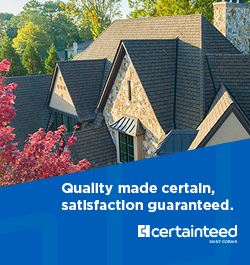California Has a New State Energy Code

By Cass Jacoby.
Starting this year, California’s Building Energy Efficiency Standards include new minimum insulation requirements.
PIMA’s State Energy Code Fact Sheet reports that California’s Building Energy Efficiency Standards (Title 24) for minimum insulation requirements for low-slope commercial roofing in both new and existing buildings have changed.
California’s new energy code is a vital pillar of their climate action plan, as it is designed to reduce wasteful and unnecessary energy consumption in newly constructed and existing buildings. The Energy Code impacts residential and commercial buildings, and the industrial sector, which together CESA reports account for almost 50 percent of California’s greenhouse gas emissions.
The new energy efficiency regulations for construction in the state of California, include changes to lighting, mechanical ventilation systems, wall and attic insulation, and approaches to overall energy efficiency to encourage energy-efficient approaches to work towards the state goal of building decarbonization. Read on to learn from Polyisocyanurate Insulation Manufacturers Association (PIMA) about new state-specific insulation requirements for roofs installed on nonresidential, hotel/motel and multifamily buildings.
Effective January 1, 2023, the insulation requirements for roof alterations apply to all roof replacements and recovers regardless of whether existing insulation is located above or below the roof deck. Reference PIMA's California state energy code fact sheet for specific information, including a table that lists insulation requirements by building type and additional details on how to interpret the new prescriptive minimum requirements.
Key highlights
-
High-performance attics and walls will now be required.
-
Prescriptive options for attics have been simplified.
-
The mandatory minimum requirements for roof alterations depending on climate zone are:
-
R-17 or R-23 with continuous insulation
-
U-0.042 or U-0.037 with a combination of insulation
These new requirements give contractors the ability to offer customized solutions to increase energy efficiency and help meet the new building code on a budget. Here are a few ways to achieve these new energy standards.
Understand climate zone-specific requirements
To determine which insulation products will match the new energy standards, you will need to understand the different R-value and U-factor requirements within the project’s climate zone. Climate zones are determined based on energy use, temperature, weather and a variety of other factors. You can reference the California Energy Commission for specific climate zones and more information on the code changes.
R-value here measures the resistance to heat flow, thus the higher the R-value, the more powerful the insulating system.
2 - Creating high-performance walls
The requirements for high-performance walls are based on assembly U-factors, rather than insulation R-value. The U-factor requirements vary based on climate zones, following this breakdown:
• Climate zones 1-5 and 8-16: the maximum U-factor for wall assemblies is U-0.051; R-19 cavity insulation plus R-5 rigid insulation in 2×6 framing or R15 cavity insulation plus R-8 rigid insulation in 2×4 framing would be two possible options.
• Climate zones 6 and 7: the maximum U-factor for wall assemblies is U-0.065; R-19 cavity insulation plus R-2 rigid insulation in 2x6 framing or R-15 cavity insulation plus R-4 rigid insulation in 2x4 framing would be two possible options.
According to Builderonline, a popular way to balance code compliance with diverse product needs and budgets is to use hybrid solutions, like combining spray foam with fiberglass.
Conclusion
As with any project, regardless of climate zone or state, install quality is key to creating a high-performance system. Understanding the codes for each specific climate zone and the products that can be utilized to meet them can help you deliver high-performing wall and attic systems that meet and exceed California’s energy standards.
Learn more about PIMA in their RoofersCoffeeShop® Directory or visit polyiso.org.
About Cass
Cass works as a reporter/writer for RoofersCoffeeShop, AskARoofer and MetalCoffeeShop. When she isn’t writing about roofs, she is putting her Master degree to work writing about movies and dancing with her plants.























Comments
Leave a Reply
Have an account? Login to leave a comment!
Sign In